Beijing published a draft plan for the long-term development of the Chinese capital on Wednesday, with a proposed population cap of 23 million.
It is the latest attempt to cure Beijing of “Big City Syndrome”, in which rapid and imbalanced growth creates a congested, polluted and chaotic industrial mega-city.
The largest city in the country is actually Shanghai. Its urban residents numbered 24.3 million at the end of 2014. The city is perhaps too attractive for its own good. Residents are concerned about the high pressure that this rapid rise in population puts on water, land and social stability.
Shanghai will see its population capped at 25 million.
As the largest city in the north, Beijing is also seeking to cap its population growth.
23 million people will live in Beijing by 2020
Under the plan, Beijing, now home to around 21.72 million people, will limit its population to 23 million as of 2020, which means a population increase of roughly 5.5 percent.
Thanks to government efforts, Beijing's population growth has slowed. The annual growth rate was two percent from 2010 to 2015, a sharp drop from the five percent rise in the previous five-year period, according to Beijing Statistical Information Net.
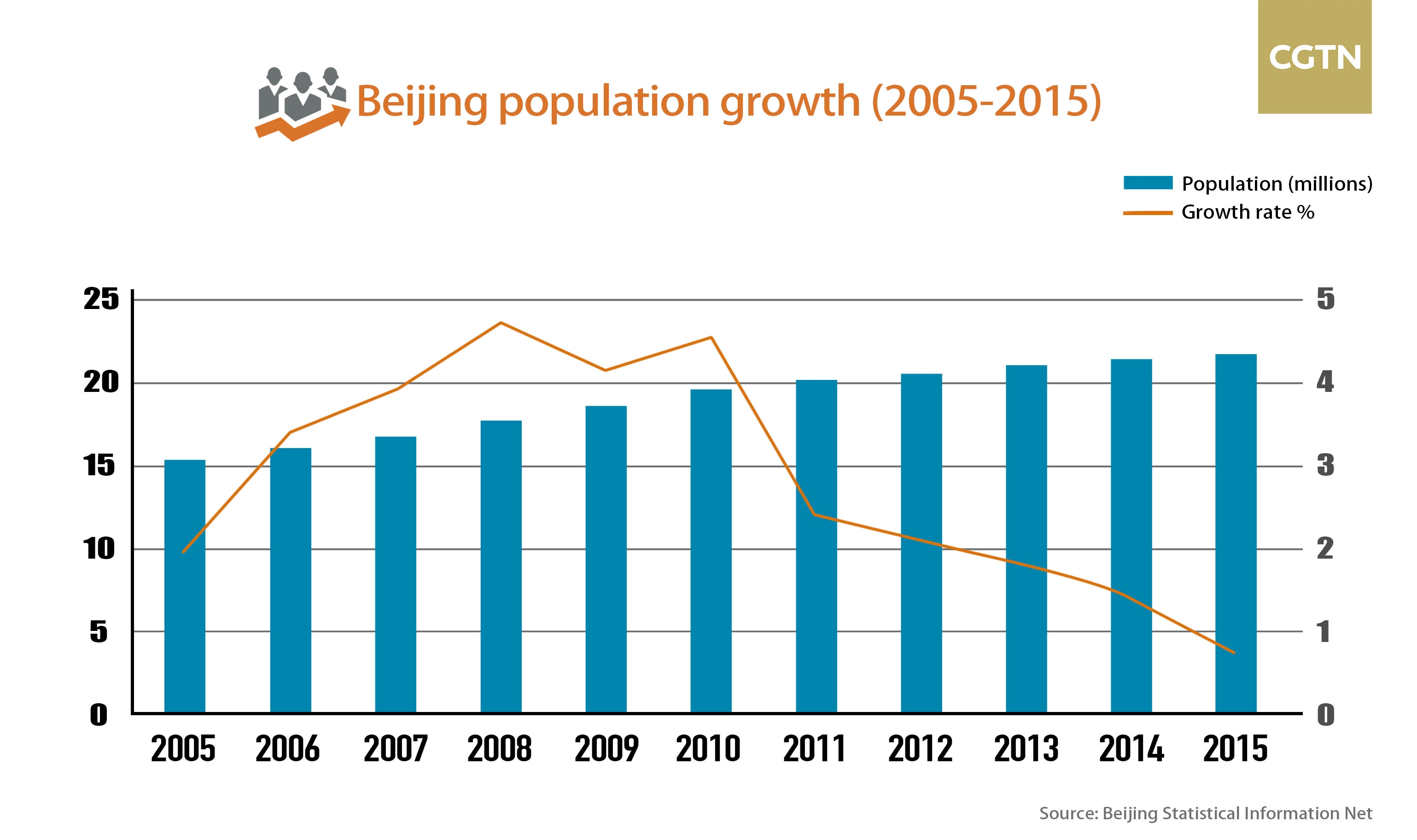
CGTN Photo
The numbers were boosted by migration from across the country. The city’s statistics bureau said over one third of the population growth was through migration as of late 2015. More than 8.22 million people moved to the city, accounting for 37.9 percent of the total population.
The aim for 2020 is to limit the population to within 23 million, which would be achieved by relocating the downtown population to suburban areas within the next five years.
In 2016, approximately 300 companies began the process of relocation, along with hospitals in the Dongcheng District. Within the next five years, large logistics bases, wholesale markets and government organs will join the number.
A green city
Pollution is a stark concern for Beijingers.
Blue sky was called a "luxury" product when a reporter brought up the issue with Chinese Premier Li Keqiang during this year’s Two Sessions.
Three years after the Chinese government declared war against smog, Premier Li said it would take time to win.
In 2016, the average density of PM2.5 in Beijing was 73 micrograms per cubic meter, down 9.9 percent from the previous year, official data showed.
The city aims to cut the concentration of hazardous fine particle matter PM2.5 to 56 micrograms per cubic meter in 2020 and 35 micrograms per cubic meter in 2030, Wednesday’s draft said.
Car exhausts are also blamed for the chocking air.
The number of vehicles in the city grew to over 5.7 million in 2015, more than double the figure in 2005.
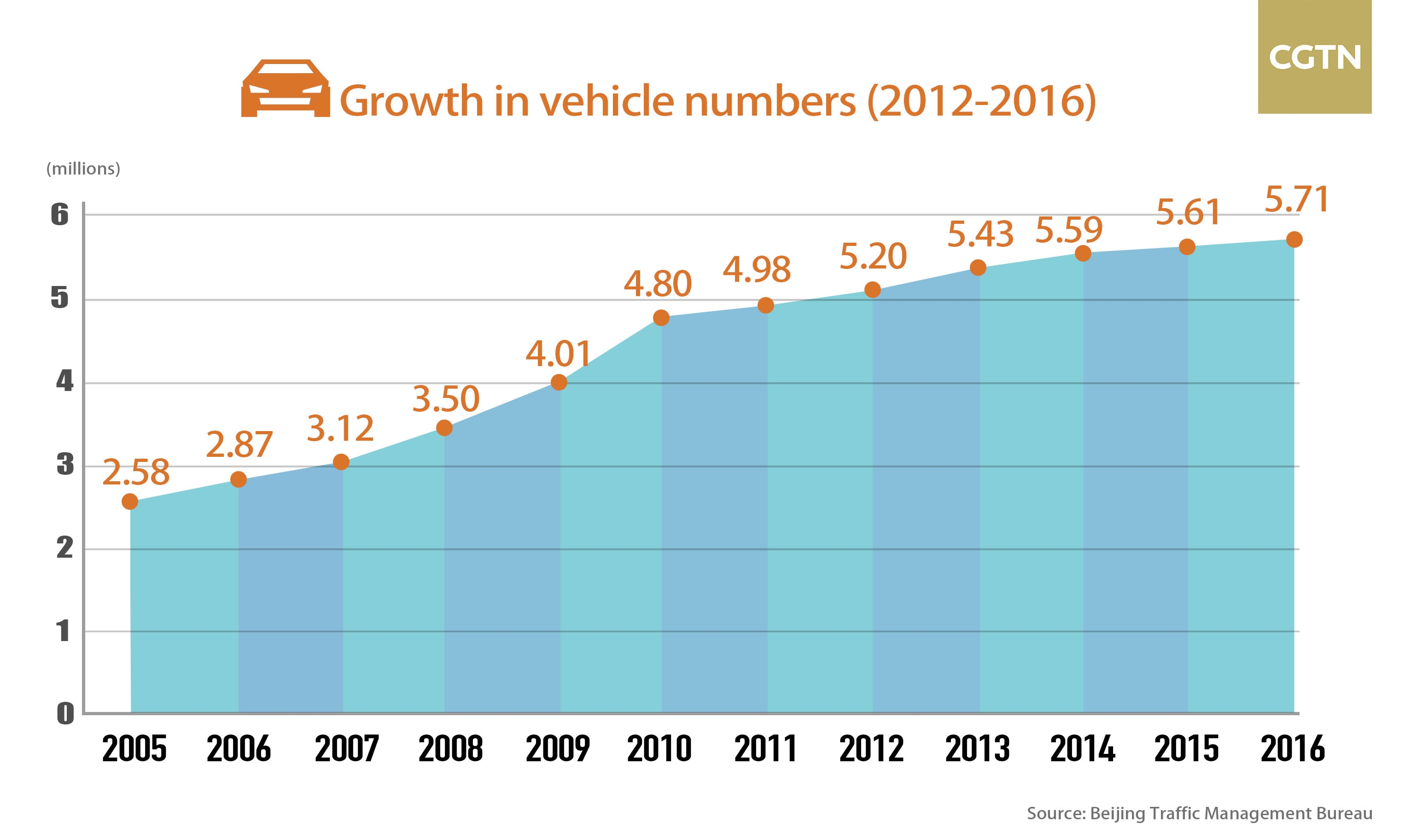
CGTN
In a bid to reduce the city's carbon footprint, planners aim to ensure 80 percent of its population will travel by public transport by 2030, with a 12.6 percent increase in the public bike system and 42 percent rise in bus users.
In the meantime, Beijing hopes to be a top global city with forest covering 45 percent of its land area, the plan added.
These measures will be accompanied by tough environmental standards to force industry upgrades and regional environmental inspections to tackle air pollution.
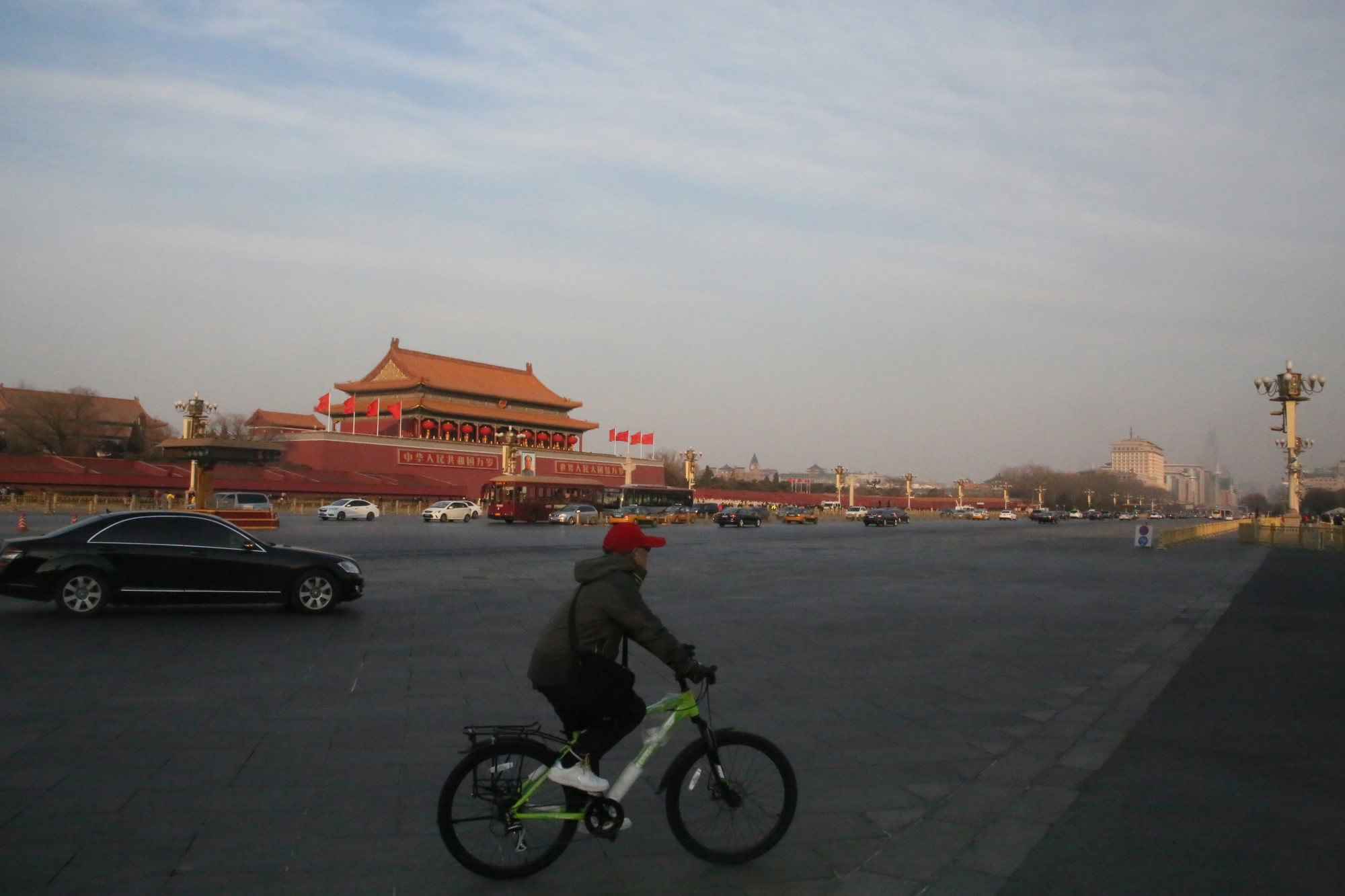
VCG Photo
The measures state air quality levels will be pulled in line with national standards by 2030.
Beijing-Tianjin-Hebei
Another key aspect of China's plans for the Beijing area is the integration of the Beijing-Tianjin-Hebei region, which the draft plan says should reach a "high level of coordinated development" by 2050.
Beijing-Tianjin-Hebei, also known as Jing-Jin-Ji, will be the recipient of a total of 3.5 trillion yuan (about 509 billion US dollars), with the goal of building 30,000 kilometers of rail network, including 11,000 kilometers of new high-speed railways.
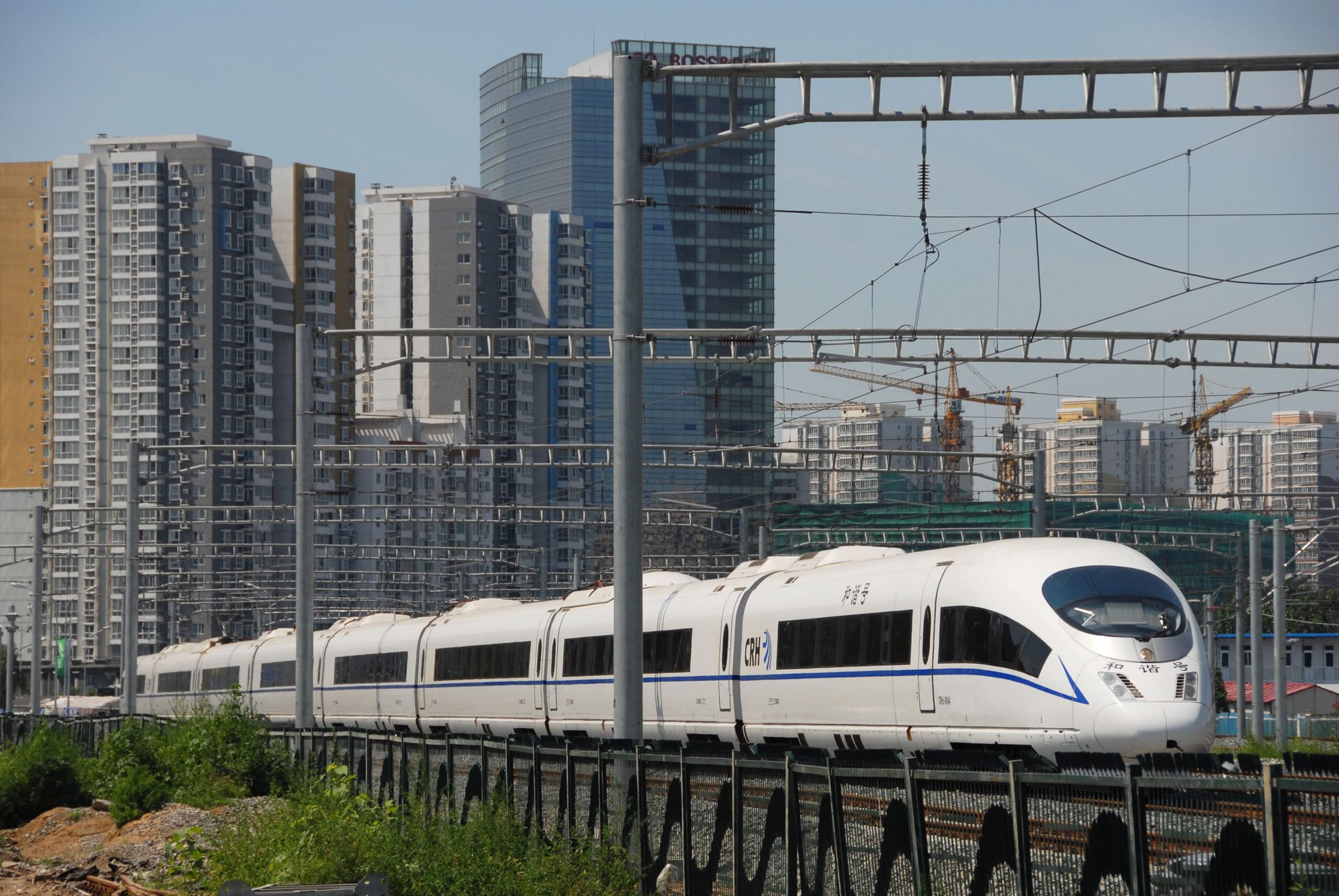
VCG Photo
The road network will increase by 320,000 kilometers, including 30,000 kilometers of new expressways; the number of quay berths for 10,000 tons of cargo or above will increase by over 300; and the number of airports for civil use will increase by over 50.
With these efforts, authorities hope to increase mobility and connectivity among these regions and cure “Big City Syndrome.”
The Beijing government said the draft plan will be available for public comment until April 27.
City planning
According to the draft plan, the municipal government of Beijing will move to the suburban district of Tongzhou, from the center of the city. However, it did not give a timetable on the relocation of the municipal government organs. The city will expand along two axes, the Changan Avenue and the Central Axis (connecting the south of the city to the north).
The central (6 districts): Dongcheng, Xicheng, Chaoyang, Haidian, Fengtai and Shijingshan;
Beijing Municipal government: Relocated to Tongzhou District;
Two Axes: Build along Changan Avenue and the Central Axis;
10 suburban districts: Mentougou, Fangshan, Shunyi, Daxing, Yizhuang, Changping, Pinggu, Huairou, Miyun and Yanqing.
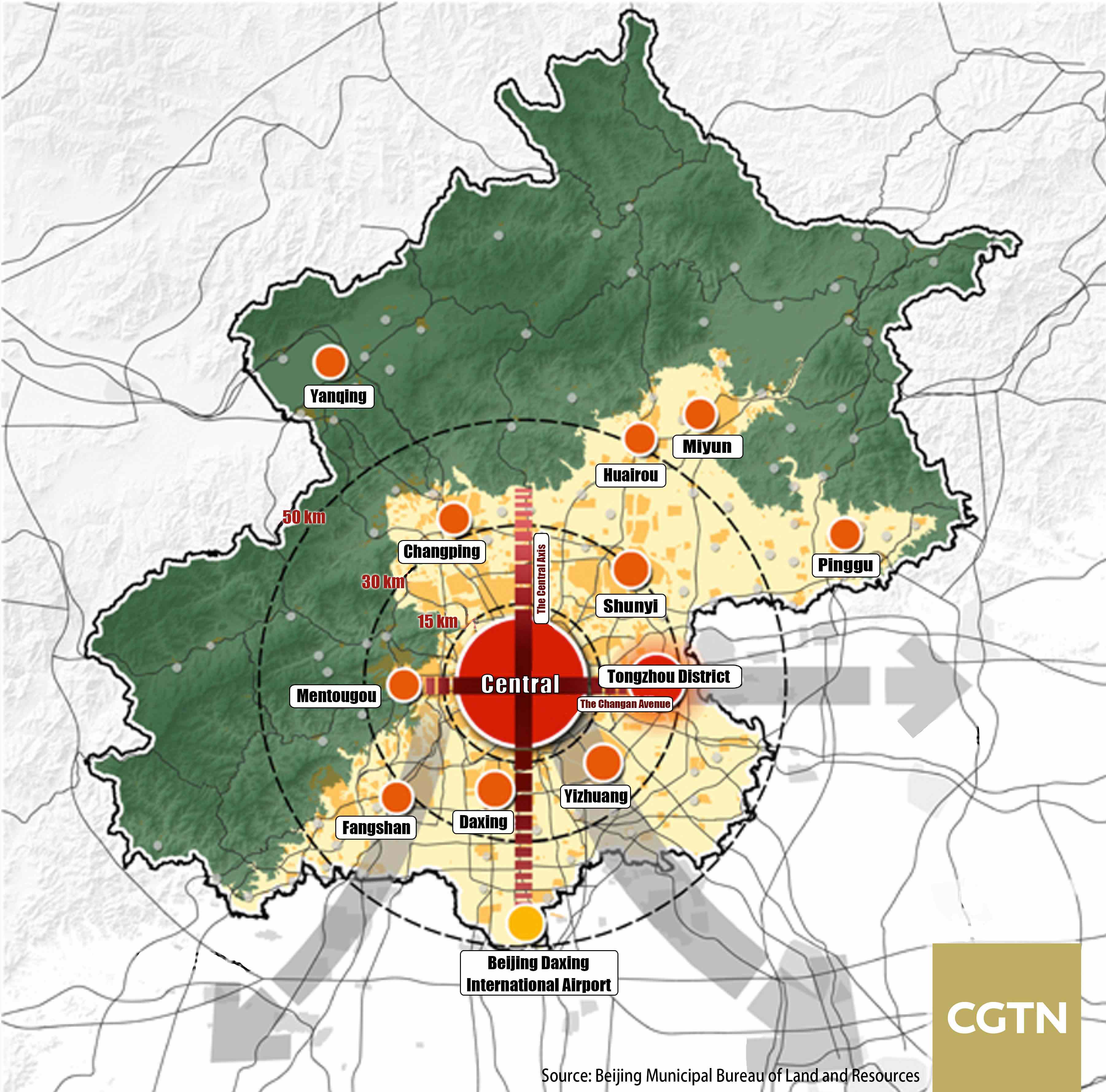
CGTN Photo









